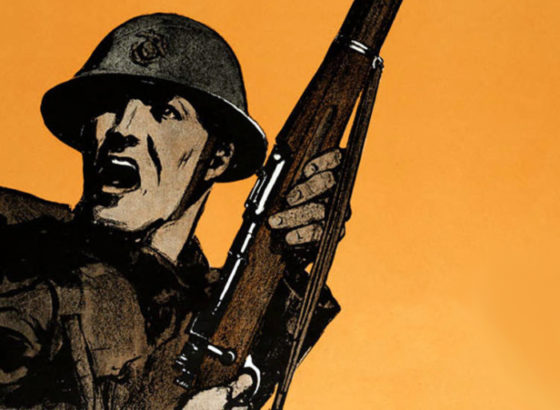
“The U.S. government still chose to bankroll a series of films to explain to both servicemen and civilians alike the reasons for America’s involvement in the widening struggle.”
FEW TIMES IN HISTORY HAVE AMERICANS been as united on an issue as they were in the days following the Japan’s surprise attack on Pearl Harbor.
While a Gallup poll released just days before Dec. 7, 1941 revealed that only half of Americans at the time (52 percent) believed that a conflict with the Axis was inevitable, a sample taken following the bombing showed an unprecedented 97 support for war.[1][2] Not even the 9/11 attacks 60 years later produced such unanimity (support for the so-called War on Terror peaked early at 89 percent). [3]
Yet even with de facto unanimous public backing, the U.S. government still chose to bankroll a series of films to explain to both servicemen and civilians alike the reasons for America’s involvement in the widening struggle.

To make the case to the public, Uncle Sam turned to Oscar-winning filmmaker Frank Capra, the talent behind smash Hollywood hits like You Can’t Take It With You (1938) and Mr. Smith Goes to Washington (1939). The result was Why We Fight – a series of seven hour-long documentaries that explained to citizens the origins of the global conflict and what was at stake if America didn’t see the thing through.
Not surprisingly, the movies framed the war using a now-familiar good vs. evil narrative, while ironically glossing over certain inconvenient truths about the United States’ allies — for example, the Soviet Union’s cynical 1939 pact with Hitler to partition Poland is never mentioned.
The series, which largely focused on the war’s early years, was rolled out gradually between 1942 and 1945. Individual episodes deal with specific aspects of the conflict such as the rise of Nazism, the fall of Poland and France, the Battle of Britain, the invasion of Russia and Japanese aggression in China.
By VE Day, more than 54 million Americans had seen the Why We Fight series. One of the films, Prelude to War, even won an Academy Award for Best Documentary. In fact, the movies were considered so vital to the American war effort, the U.S. Army awarded Capra the Distinguished Service Medal.
To this day, the documentaries remain in the public domain as fascinating historical and cultural artifacts. They are viewable in their entirety here:
Prelude to War (1942) explains the rise of fascism in Germany and Italy as well as Japan’s aggression in the Far East.
The Nazis Strike (1943) covers appeasement, the Munich Crisis and the years leading up to the German invasion of Poland.
Divide and Conqueor (1943) focuses on the Blitzkrieg of Europe in 1939 and 1940.
The Battle of Britain (1943) explores the lethal contest for the skies above England.
The Battle of Russia (1943) covers Hitler’s 1941 attack on the U.S.S.R.
The Battle of China (1944) shines the spotlight on Japan’s genocide in Manchuria.
War Comes to America (1945) is the climax of the series and depicts the United States’ entry into the war.









